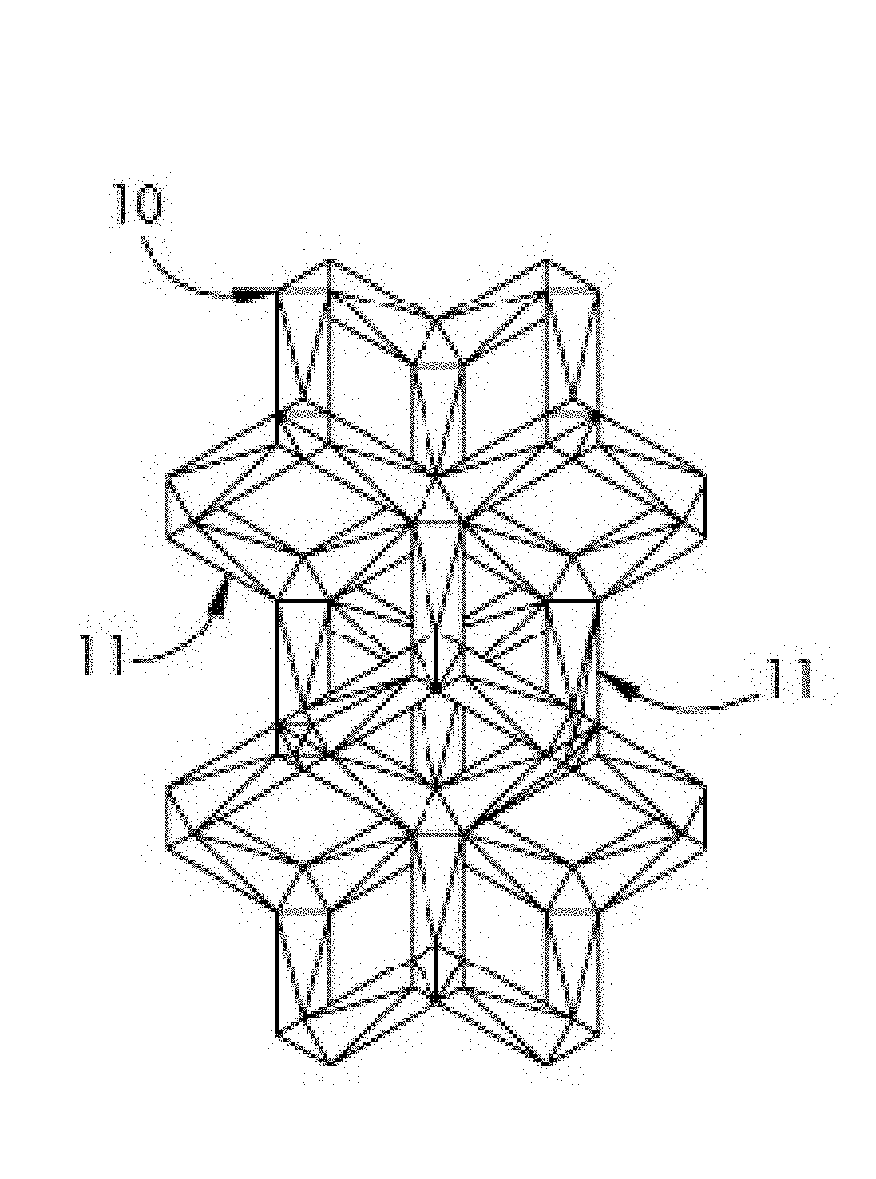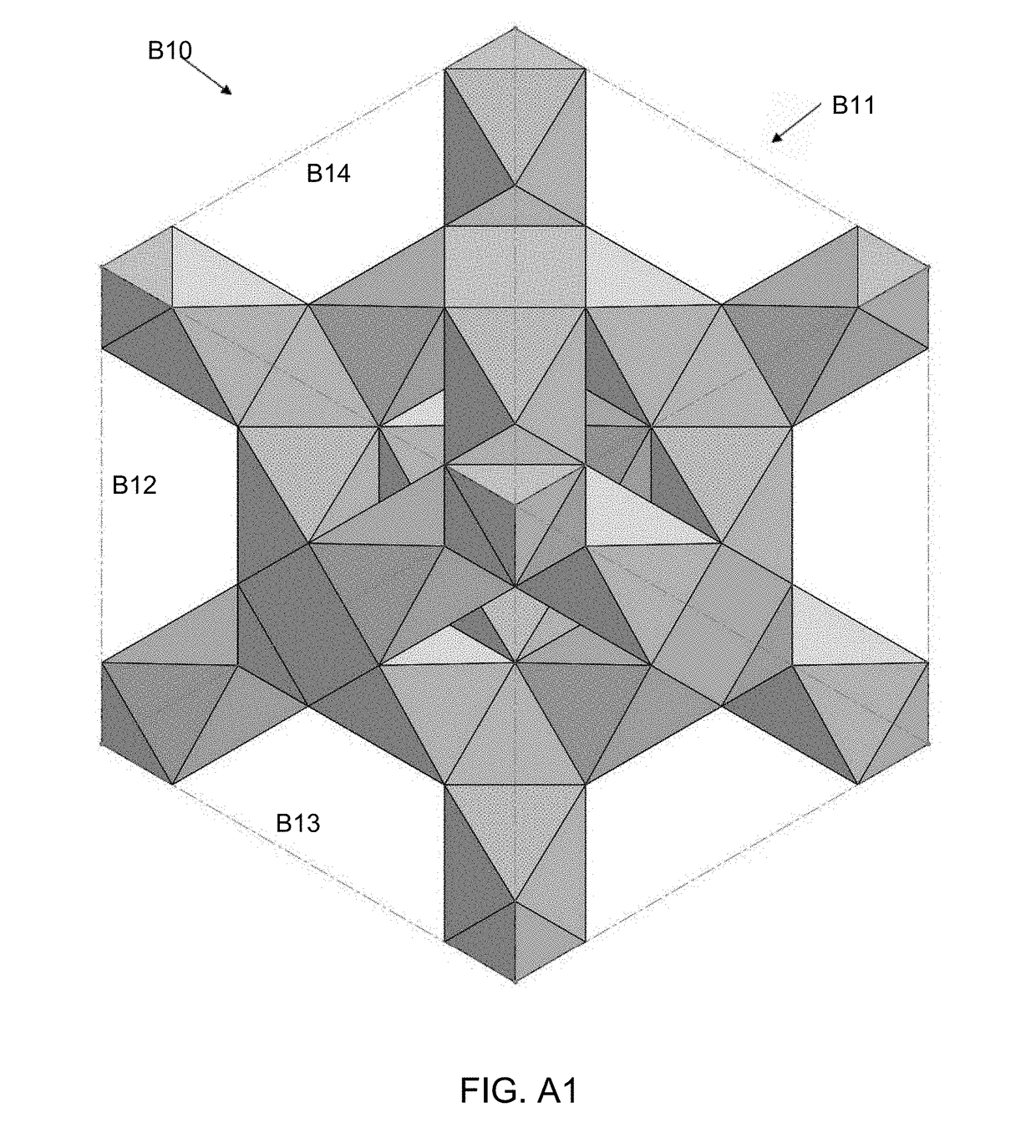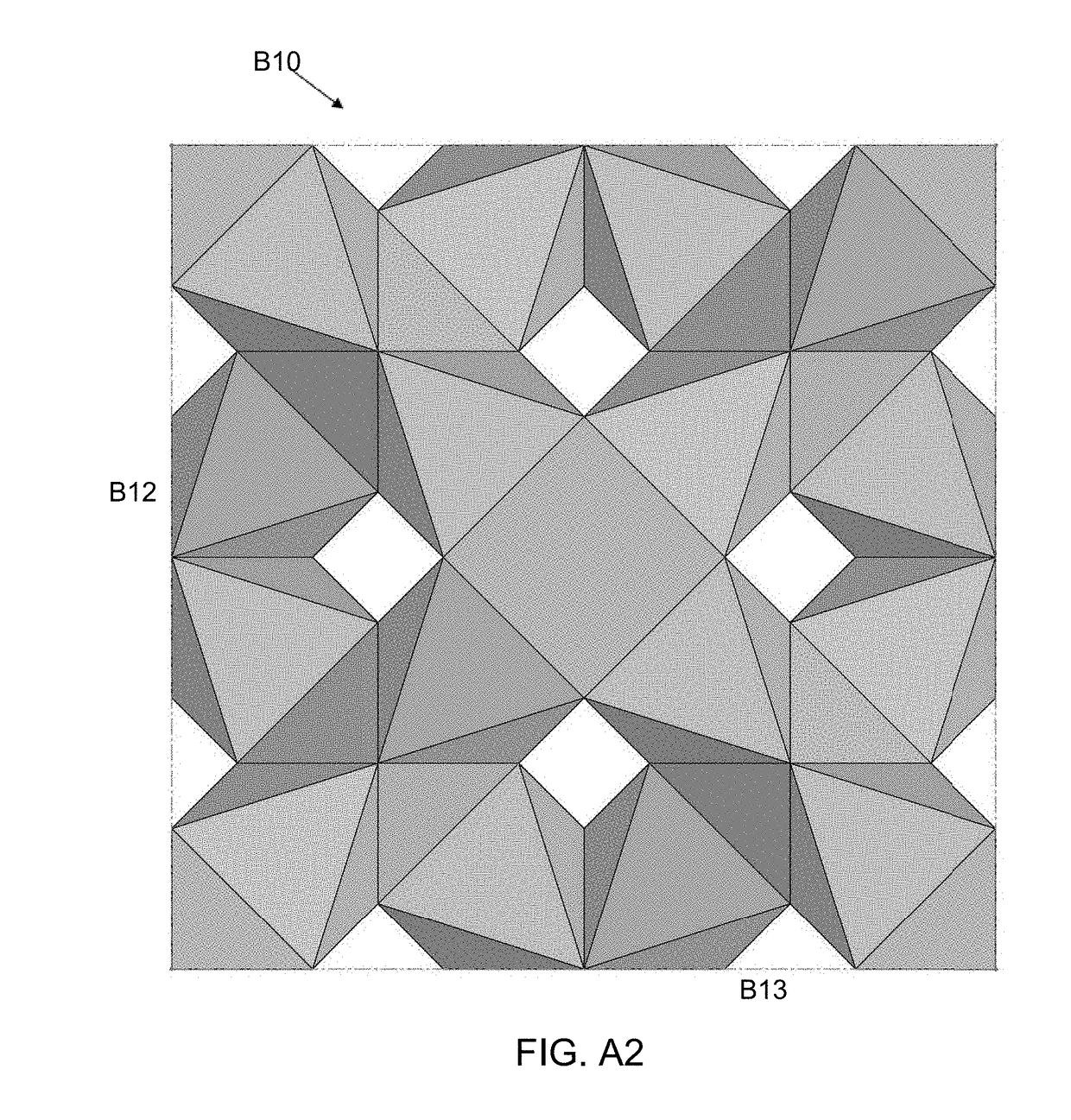Anisotropic Biocompatible Lattice Structure
a biocompatible, anisotropic technology, applied in the direction of dental surgery, prosthesis, additive manufacturing process, etc., can solve the problem of reducing the mechanical strength of new bone formation
- Summary
- Abstract
- Description
- Claims
- Application Information
AI Technical Summary
Benefits of technology
Problems solved by technology
Method used
Image
Examples
first embodiment
[0132]FIGS. 4-6 show a repeatable unit cell structure of the present invention. The first embodiment is an elongated MRDD lattice 110 where the shape of the unit cells is defined by struts 111. The first embodiment is a single complete elongated RDD cell with additional struts extending outward that represent portions of a repeating structure. In FIG. 4 is an isometric view, in FIG. 5 is a front view and in FIG. 6 is a bottom view of the elongated MRDD lattice 110. The side views and back view are substantially the same as the front view. The top view is substantially the same as the bottom view.
[0133]In the elongated MRDD lattice 110, each unit cell is the intersection of elongated modified rhombic dodecahedrons defined by twelve sides in the shape of rhombuses. Because the elongated MRDD lattice 110 has an open cell structure, each side of the unit cell is defined by four struts 111 that form a rhombus in a flat plane. The elongated MRDD lattice 110 is elongated in the x and y dir...
PUM
| Property | Measurement | Unit |
|---|---|---|
| elastic modulus | aaaaa | aaaaa |
| elastic modulus | aaaaa | aaaaa |
| elastic modulus | aaaaa | aaaaa |
Abstract
Description
Claims
Application Information
 Login to View More
Login to View More - R&D
- Intellectual Property
- Life Sciences
- Materials
- Tech Scout
- Unparalleled Data Quality
- Higher Quality Content
- 60% Fewer Hallucinations
Browse by: Latest US Patents, China's latest patents, Technical Efficacy Thesaurus, Application Domain, Technology Topic, Popular Technical Reports.
© 2025 PatSnap. All rights reserved.Legal|Privacy policy|Modern Slavery Act Transparency Statement|Sitemap|About US| Contact US: help@patsnap.com



